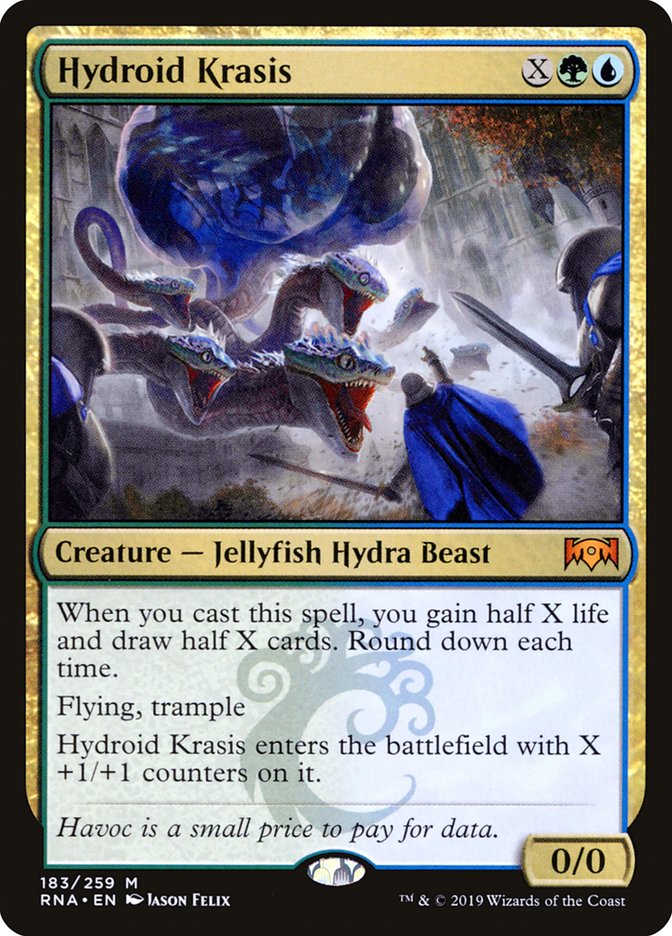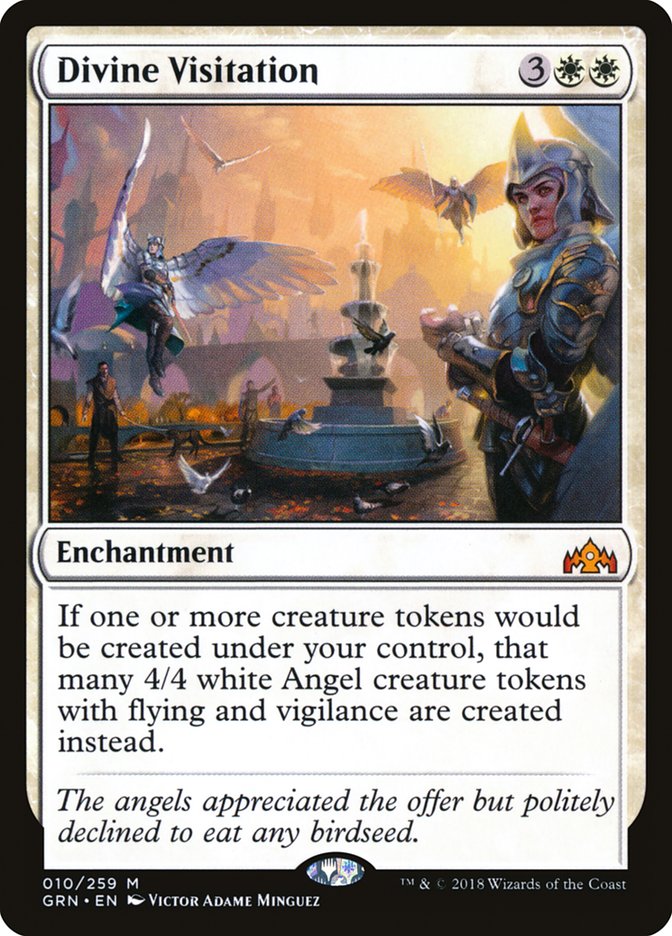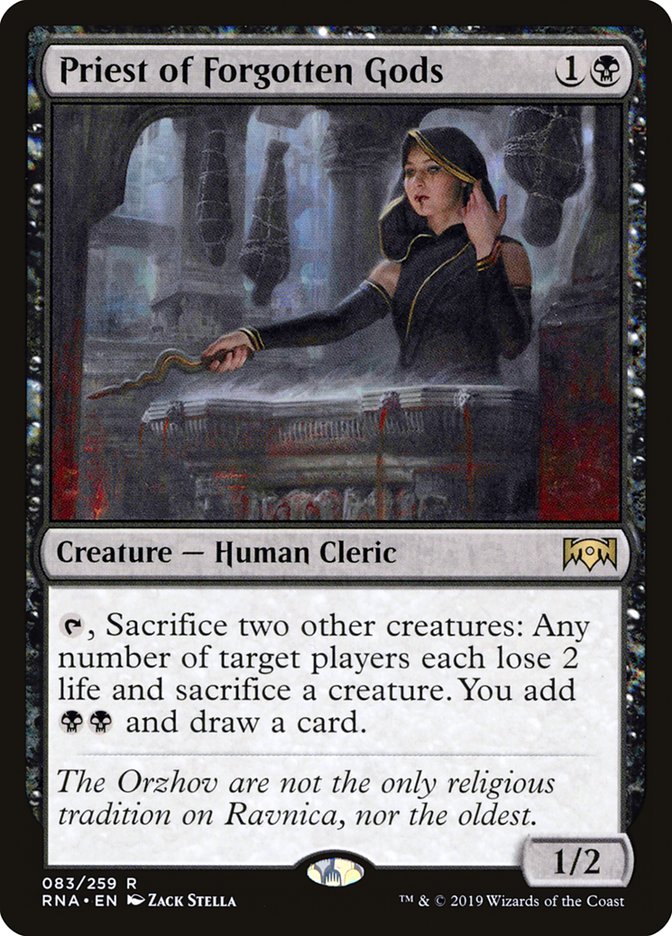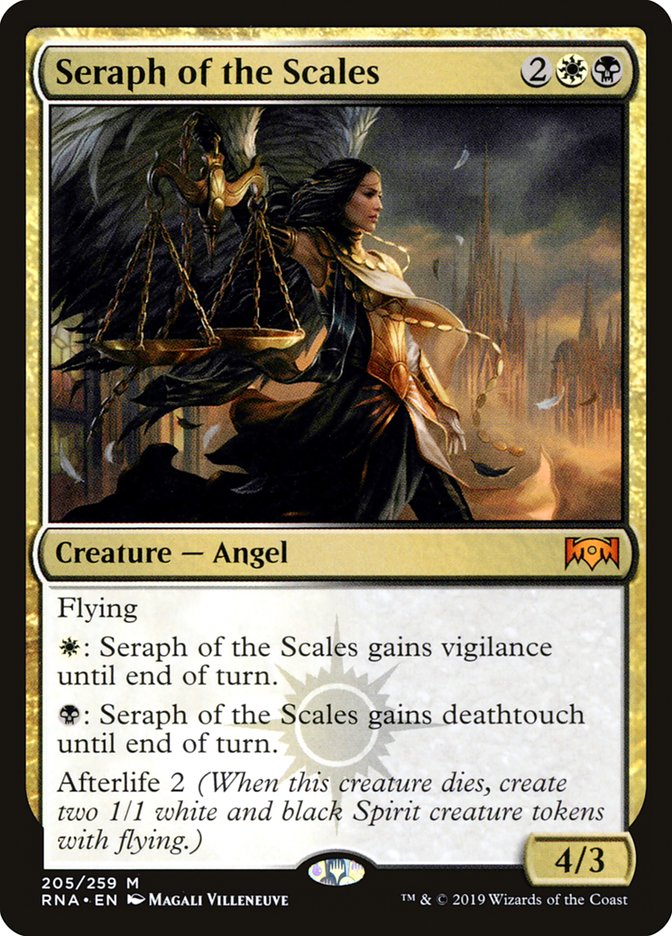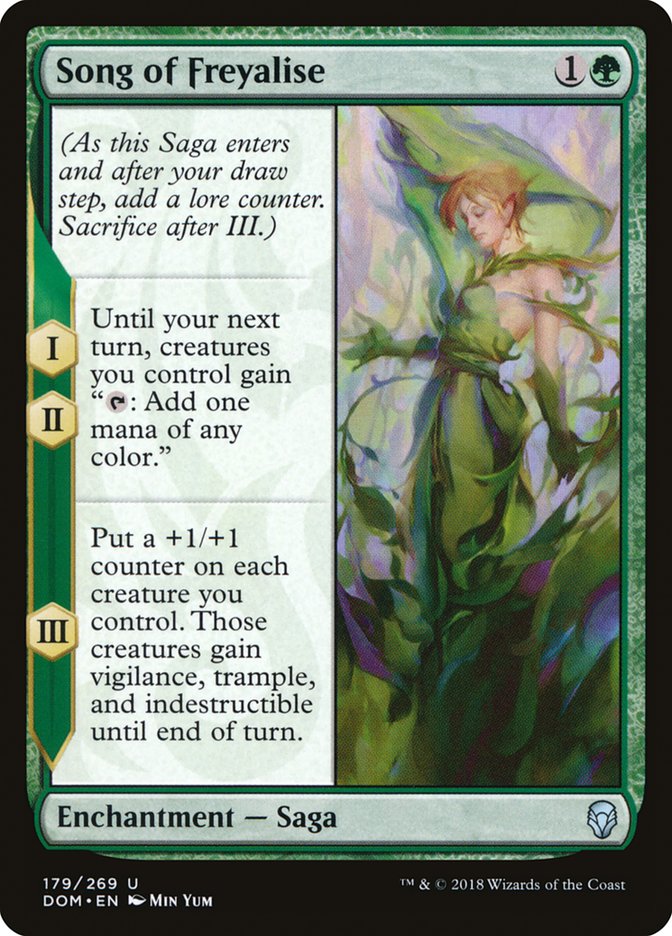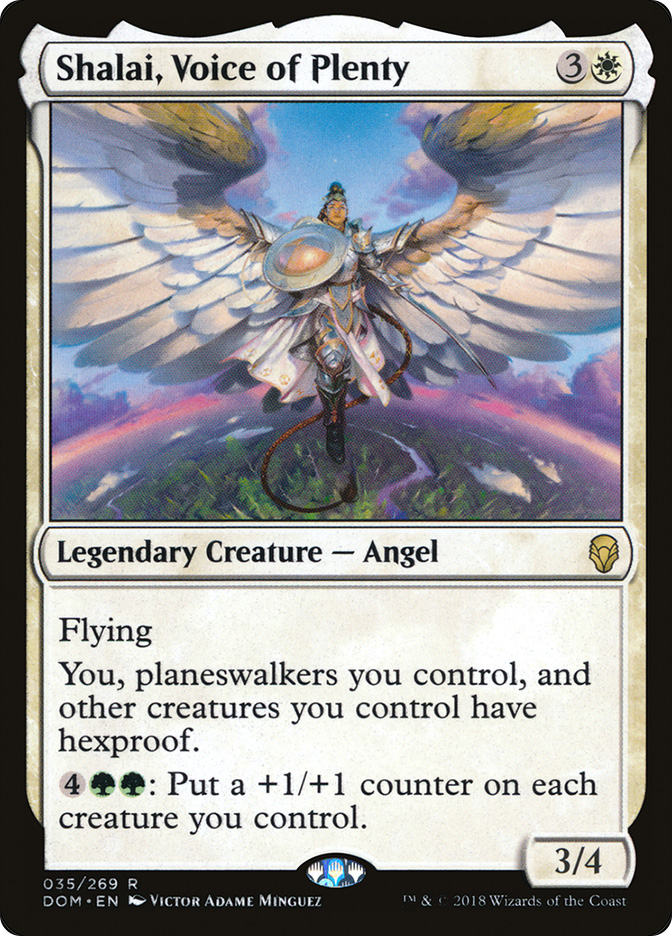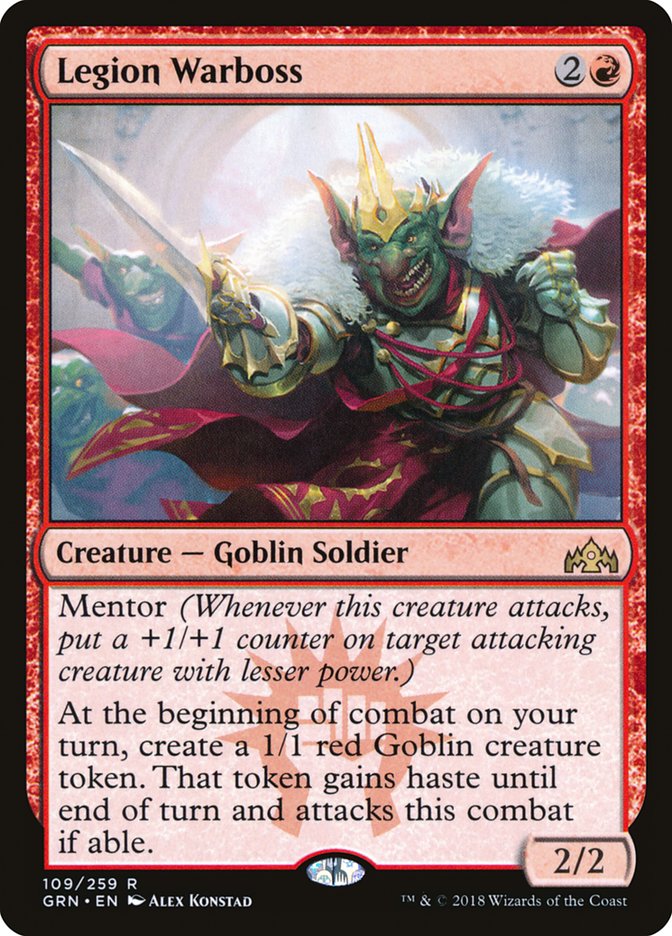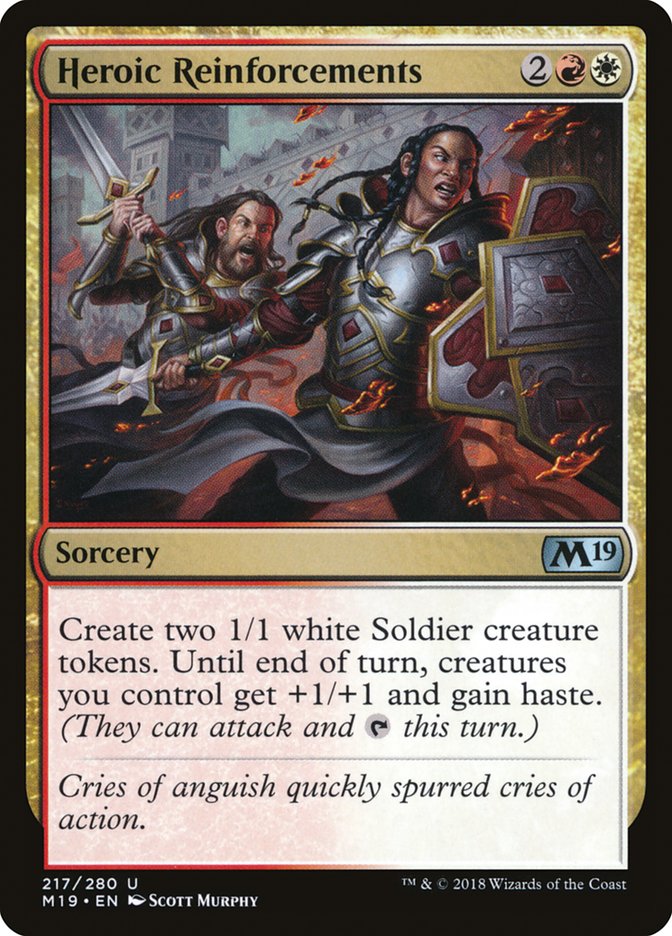If you’ve been following the fantastic @Arenadecklists Twitter
account, you’ve been concerned that Standard would come down to a sea of
creatureless decks like Nexus and Esper Control, as well as Mono-Red aggro
decks, which all exploit the best-of-one format, and people have been using
them to climb the ranks on Magic Arena. Now that we’ve had a weekend of
tournaments, we can verify what we probably could have expected – that
sideboarding makes these decks much easier to beat and the format starts to
look like its starting point is actually a sea of midrange decks trying to
grind each other out with Hydroid Krasis.
This leads to the very valid question of how you beat Hydroid Krasis. Too
many of them are backed by Wildgrowth Walker to make it easy to go under
them. The cast trigger can make them hard to beat with the “inevitability”
of a control deck–if you want to do this, I recommend attempting to
resolve Unmoored Ego on Hydroid Krasis; I feel that Unmoored Ego is wildly
underplayed at the moment. Currently, there’s a lot of “if you can’t beat
them, join them” going on, but I want to try going bigger. Not spending
more mana but making plays that ignore all the resources Hydroid Krasis
gives them. I want to overwhelm all these midrange decks with Angels.
Divine Visitation is extremely powerful. In fact, its biggest problem is
that it’s too powerful. It wins games by too much. When you look at this
card, you should ask yourself if it’s really worth going through all these
hoops to make Angels rather than just casting Lyra Dawnbringer.
You don’t get extra points for overkill, so in most games you just don’t
need to go to a card that goes as big as Divine Visitation, and you’d
prefer a card that’s faster, more consistent, and requires less setup.
However, in this Standard format, when you spend five mana on a threat, you
can’t expect it to end the game. Everything can be answered and everyone
will keep grinding through whatever you spend five mana on.
Divine Visitation, left unchecked, should go bigger than whatever your
midrange opponent is trying to do, though it will be completely worthless
against anyone who’s trying to beat you with Nexus of Fate. The problem is
that Wilderness Reclamation is already forcing people to respect
enchantments. Vivien Reid is a card people put in their decks. Mortify is a
card people put in their decks. So, can we really get away with playing a
five-mana enchantment? I think we might be able to, but we need to
understand that we might have to protect it.
I want to explore a variety of shells that take advantage of Divine
Visitation to try to go bigger than the opposition.
Creatures (23)
- 4 Legion Warboss
- 4 Hunted Witness
- 4 Tithe Taker
- 3 Judith, the Scourge Diva
- 4 Priest of Forgotten Gods
- 4 Orzhov Enforcer
Lands (22)
Spells (15)

The goal of this deck is to cast Divine Visitation and immediately take
advantage of it either by sacrificing afterlife creatures/Hunted Witnesses
to Priest of Forgotten Gods or by triggering Legion Warboss. Drill Bit
helps protect your Divine Visitation to let you set this combo up, and
Orzhov Enforcer is particularly good at connecting for the spectacle
trigger and also good at gumming up the ground to get to the point where
you can take over with Angel tokens.
My biggest fears with this deck are that without Priest of Forgotten Gods
it might be difficult to make tokens on command; and without Divine
Visitation, everything else might be too small-ball, especially if you
don’t have Priest of Forgotten Gods active. I’m not sure what the best way
to solve these problems is.
You could attempt to solve the problem of not having enough ways to make
your creatures die on command by adding additional outlets. Weirdly, I
could actually see cutting Judith for Bloodmist Infiltrator as the best way
to sacrifice a creature for free, though that certainly isn’t helping your
overall card quality or helping with the problem that your deck is too low
impact without Divine Visitation. You could also add Pitiless Pontiff,
though requiring mana to sacrifice your creatures makes it very hard to do
the same turn that you play Divine Visitation, but maybe it’s okay to wait
a turn.
Seraph of the Scales would be my first instinct for adding more
individually high impact cards to the deck, and it might just be right to
do something like cut two or three Tithe Takers for Seraph of the Scales.
The sideboard is kind of all over the place. I think Basilica Bell-Haunt is
a more impactful card against red than any other card is in any other
matchup, which is why I have the full four copies. I have a wide variety of
enchantments that let you play a longer game that basically come in against
control decks instead of creatures to reduce your exposure to sweepers,
especially Cry of the Carnarium.
Notably absent from this list is Hero of Precinct One, who should be a good
fit in a Mardu Tokens deck, but I think the deckbuilding restriction of
maximizing multicolored cards actually leads away from what I want to be
doing, and it doesn’t actually play well with Divine Visitation since it
will be mostly done making tokens by the time I cast Divine Visitation.
The next deck I want to look at is an Esper Divine Visitation deck starring
Dovin, Grand Arbiter as a way to make an Angel when you play Divine
Visitation.
Creatures (11)
Planeswalkers (4)
Lands (24)
Spells (21)
Sideboard

Here I’m playing Hero of Precinct One even though it’s not exceptional with
Divine Visitation because it’s so good with Dovin, Grand Arbiter. Deploy,
Dawn of Hope, and Memorial to Glory offer additional ways to take advantage
of Divine Visitation.
This deck borrows a lot from
Wyatt Darby’s Esper Midrange
, but the larger end game means that it needs to devote fewer cards to
closing the game out and gets to play a little more maindeck interaction in
the form of Absorb.
Dawn of Hope makes its way into the maindeck here, as it has very good
interactions with both Divine Visitation and Dovin, Grand Arbiter and plays
well with Absorb both in that it lets you do something if your opponent
doesn’t play into your Absorb and it lets you draw a card off Absorb if you
have five mana.
This deck plays as kind of a hybrid between Esper Control and Esper
Midrange, and the goal is that the additional Dovins position you well
against control, and the presence of Divine Visitation lets you go bigger
than other midrange decks.
Next, I want to look at some green options:
Creatures (21)
- 4 Llanowar Elves
- 2 Shalai, Voice of Plenty
- 3 Emmara, Soul of the Accord
- 1 Trostani Discordant
- 4 Deputy of Detention
- 3 Hydroid Krasis
- 4 Hero of Precinct One
Planeswalkers (3)
Lands (23)
Spells (13)

This deck makes a lot of tokens and can use Song of Freyalise to get mana
from those tokens for a big Hydroid Krasis, which can help set up a huge
March of the Multitudes, making Angels, and the instant speed convoke
Entreat the Angels should easily end basically any game on the spot.
This deck is really great at going wide and great at spending large amounts
of mana, thanks to March of the Multitudes and Hydroid Krasis, so this
might finally be a good fit for Song of Freyalise, which is pretty exciting
for anyone who saw the power of the card in Dominaria Limited and
was frustrated that it could never quite translate to Standard. Shalai,
Voice of Plenty is another great way to take advantage of all the tokens
and mana.
Another card I considered is Wilderness Reclamation because it’s so good
with March of the Multitudes and it makes it particularly easy to cast
Divine Visitation, untap at the end of your turn, and immediately make a
lot of Angels. The problem is that as constructed, this deck doesn’t have
enough other ways to use mana on your opponent’s turn, but it’s possible to
try to find some balance between tokens and a flash strategy to incorporate
a few copies of Wilderness Reclamation (which I think is underplayed in
Bant Flash).
If Dovin, Grand Arbiter and Legion Warboss are the best ways to make tokens
on command when we play Divine Visitation, maybe we can combine them in a
Jeskai Visitation deck:
Creatures (20)
Planeswalkers (3)
Lands (20)
Spells (17)
- 2 Plains
- 2 Mountain
- 4 Legion's Landing
- 4 Heroic Reinforcements
- 2 Divine Visitation
- 3 Unbreakable Formation
Sideboard

Divine Visitation looks a little weird at the top of the curve of a
dedicated aggro deck, but it offers a way to go over the top of the green
decks that are trying to brick your aggression. It’s not hard to imagine
having a Legion Warboss, a Haazda Marshal, and a Dovin, Grand Arbiter on
the battlefield, casting Divine Visitation and immediately making three
Angels. If that isn’t good enough, a Heroic Reinforcements for two 5/5
flying, haste Angels certainly should be.
The sideboard focuses on Spell Pierce over Negate, because the deck is
trying to play short games, and Disdainful Stroke to answer opposing Angels
like Lyra Dawnbringer and Angel of Grace as well as any other big play that
might catch the opponent up. Deploy and Venerated Loxodon come in against
red decks, and Tajic, Legion’s Edge is great against damage-based sweepers.
This deck plays a lot of mana sources for an aggro deck, but that just
helps smoothly curve into Heroic Reinforcements. For an aggro deck like
this, missing a land drop can be much more dangerous than flooding out,
especially against midrange decks.
This is actually an important general principle that I think doesn’t get
talked about enough, so try to make note of this: If you’re playing an
aggro deck in a control format, land-light draws and low curves are great;
the threat-heavy draws tax control decks’ removal and allow you to punish
them for taking time to draw more cards to keep lining answers up with your
cheap threats. However, a land-light draw is a death sentence against a
midrange deck, where the mana constraint will mean that you’re casting
cards that get embarrassed by the cards they’re casting and then you’re too
far behind, and the threats that get left in your hand are too low impact
to matter by the time you can cast them. An aggro deck trying to go under a
midrange deck needs to hit land drops to curve out and stay ahead of them,
and an aggro deck can potentially grind out a control deck with a
land-light draw.
Since this is more of a midrange format than a control format, this deck is
built to hit its land drops and snowball out of control while the midrange
deck is catching up.
So, there we have several different ways to try to attack the format with
Divine Visitation. The key to the card at this moment, I think, is to
understand that you can’t count on untapping with it, but if you build your
deck properly, such that you can get some number of Angels out of it the
turn it enters the battlefield, you may not need to untap with it.


